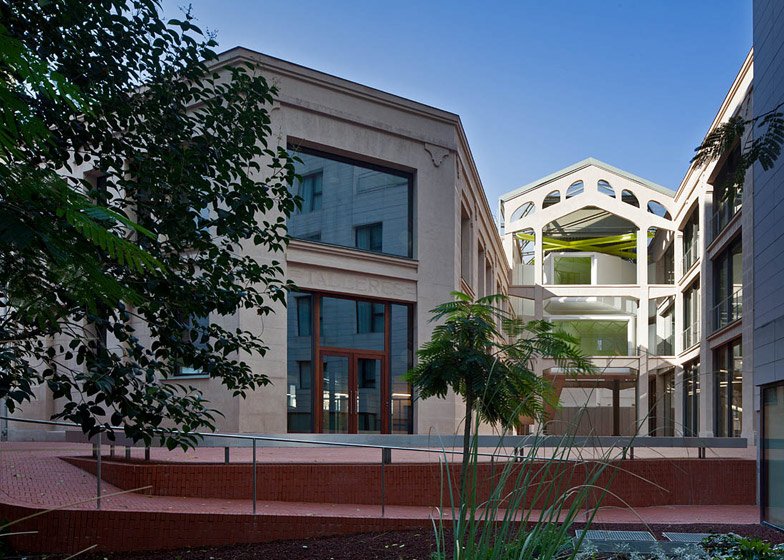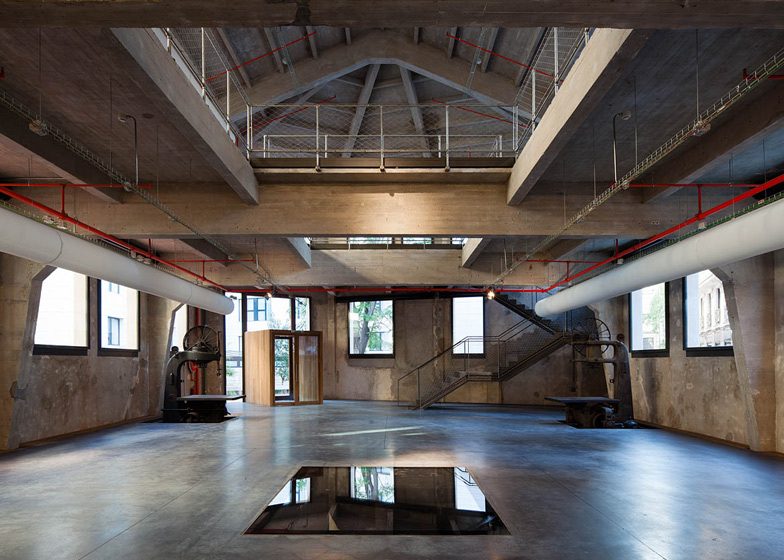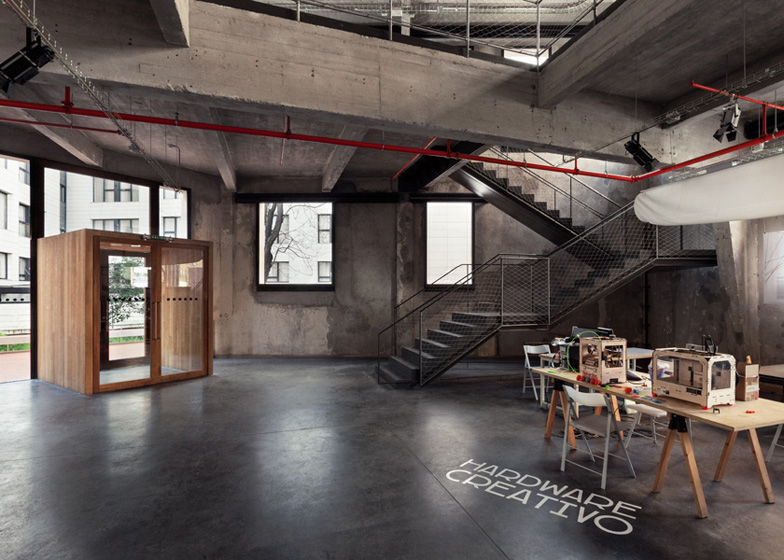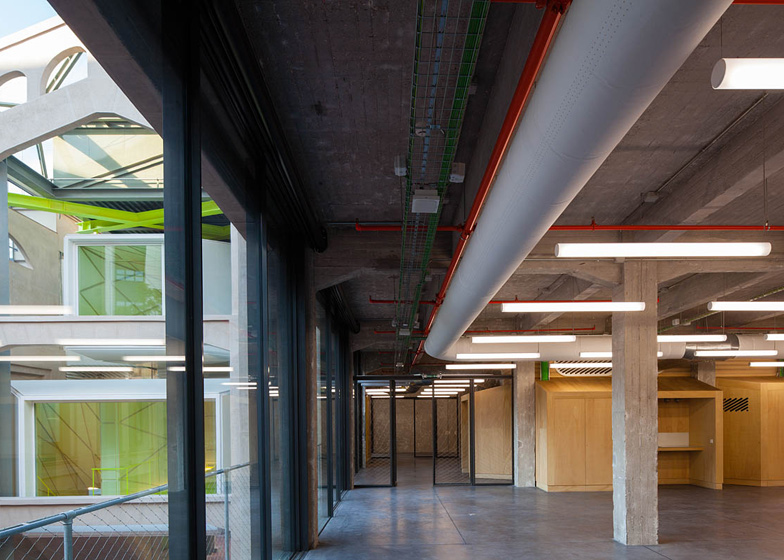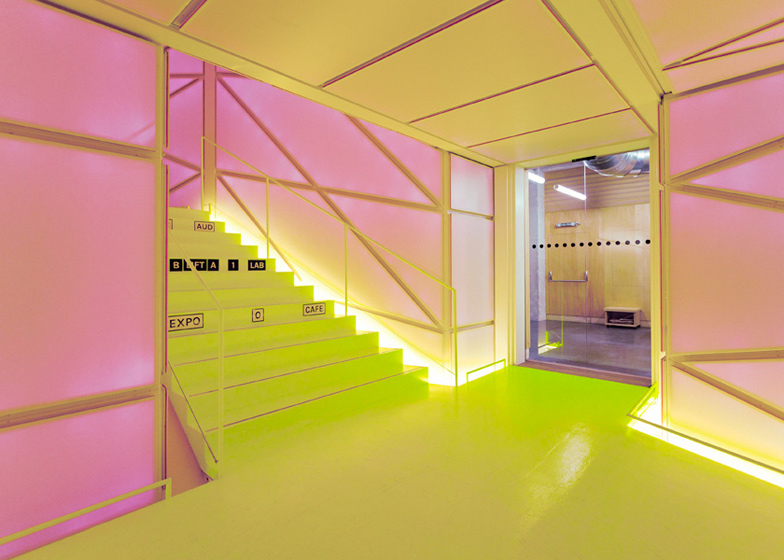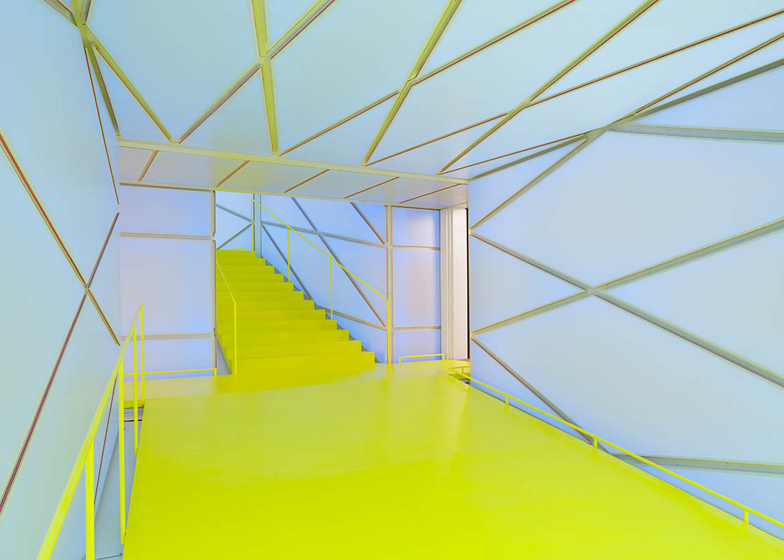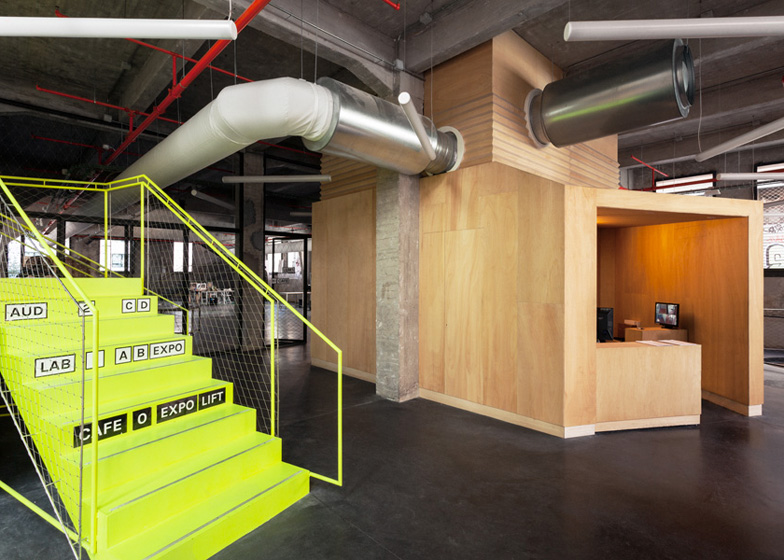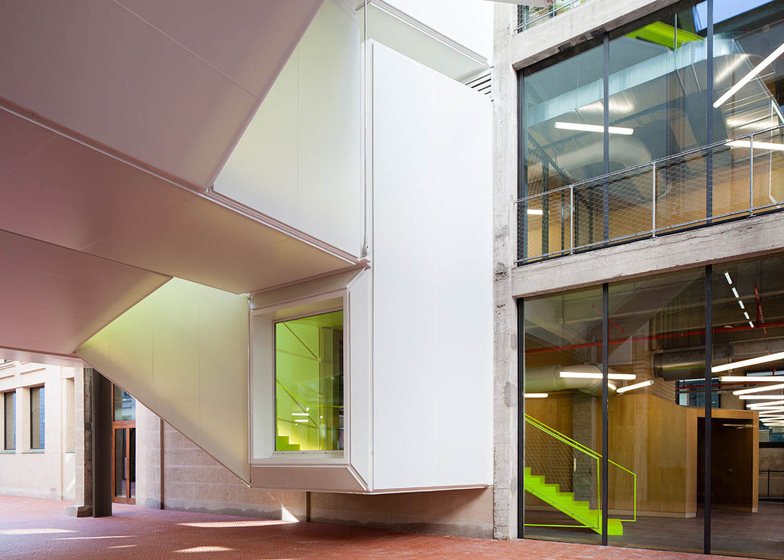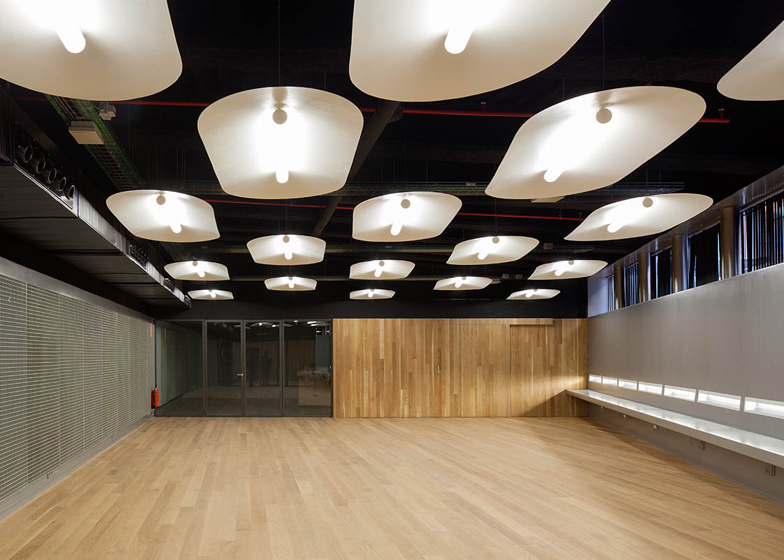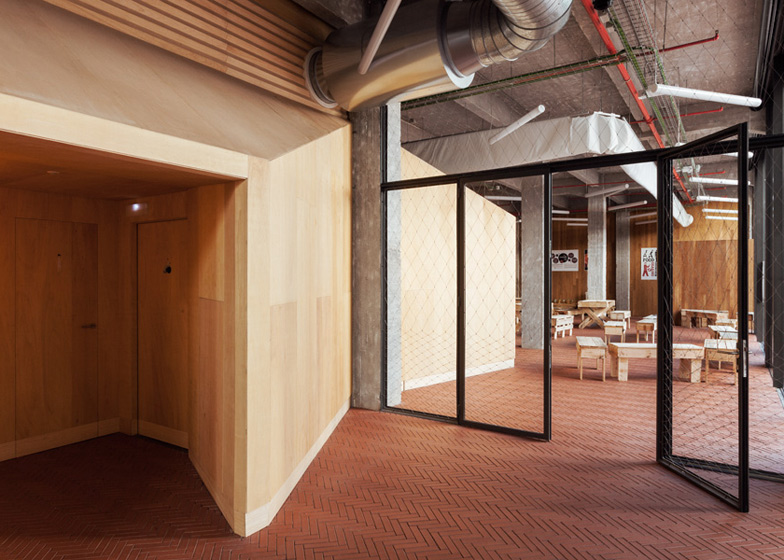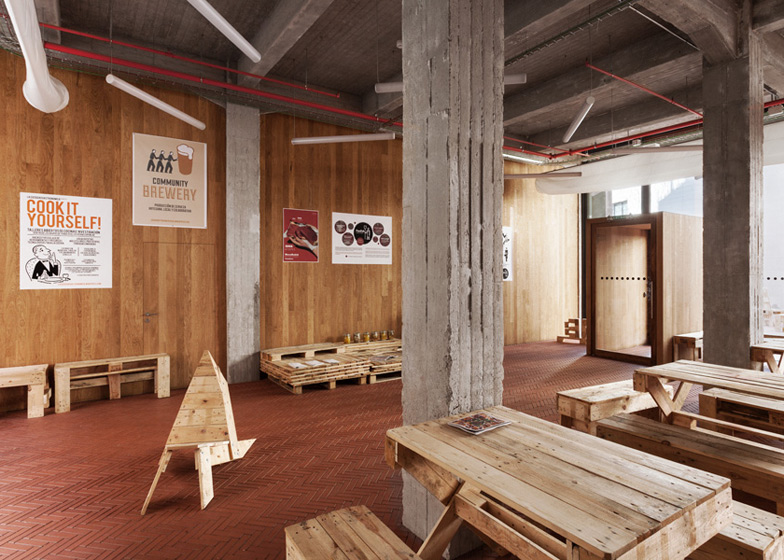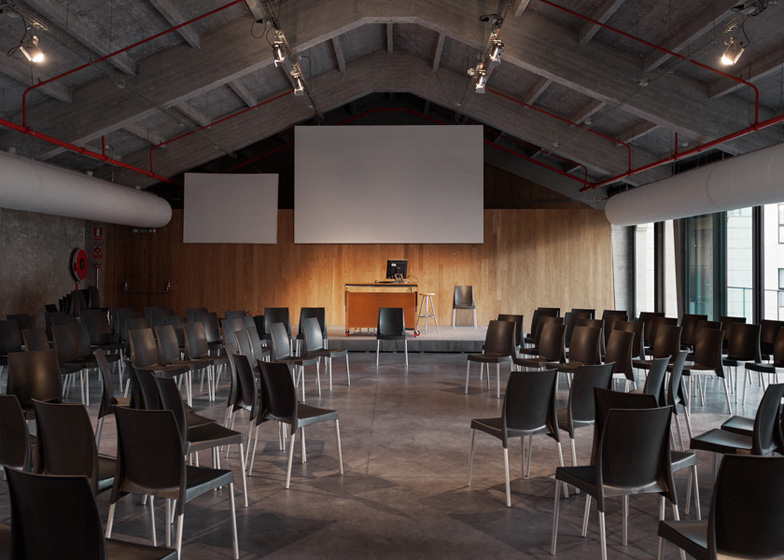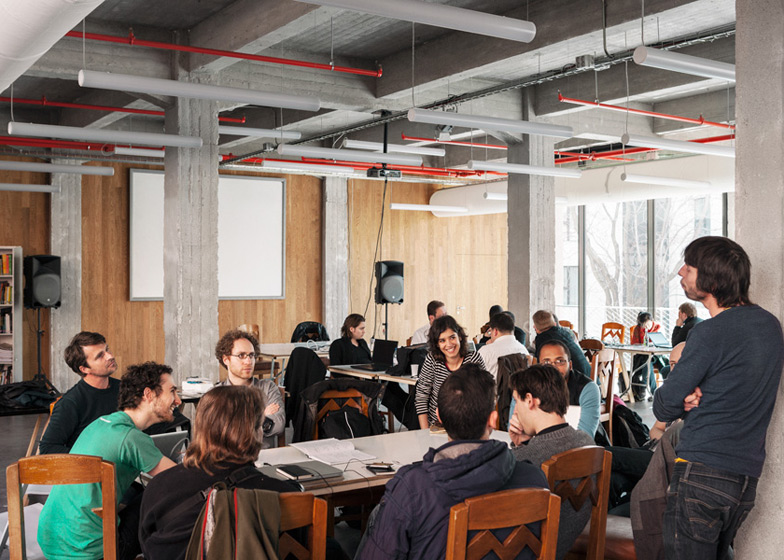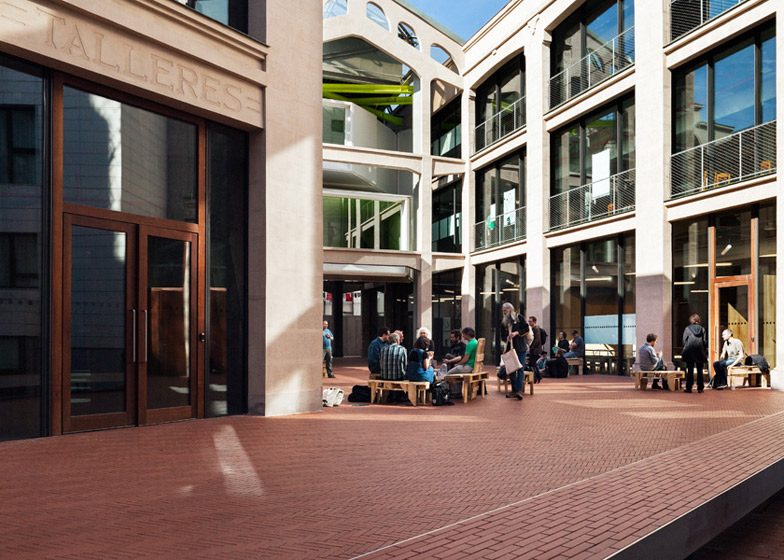Spanish studio Langarita-Navarro Arquitectos has created an arts centre in Madrid by installing a flexible structure behind the concrete walls of an old industrial building (+ slideshow).
The renovated building functions as a research laboratory and exhibition space for Medialab-Prado, a city-funded organisation exploring the production and dissemination of art and digital culture.
La Serrería Belga, or The Belgian Sawmill, was built in the early twentieth century. For the renovation, architects María Langarita and Víctor Navarro decided to leave the facade of the old building intact and insert a more flexible structure inside, which they nicknamed La Cosa, or The Thing.
"[It is] a light and articulated structure with a certain pre-technological air that, infiltrated in the building, enables a large potential for transformation," they explain.
The architects used lightweight and durable materials that can easily be taken apart and repurposed to facilitiate the changing needs of the organisation.
"Any duplication or incorporation of elements or solutions that had already been contributed by the Serrería building was avoided," they say.
A three-storey volume was inserted into a void at the centre of the building and features translucent walls that can be illuminated with different neon colours.
A series of wooden boxes provides an entrance and smaller rooms elsewhere in the building. There are also new staircases, wooden furniture and blinds that function as projection screens.
Langarita-Navarro Arquitectos worked on a similar project to construct a nomadic music academy in a Madrid warehouse. Other buildings by the studio include a road-side restaurant and event space and a house with an irregular geometric platform.
See more architecture and interiors in Madrid, including a cinema in a former slaughterhouse.
Here's some more information from Langarita-Navarro Arquitectos:
Medialab-Prado
Madrid, Spain
Perhaps more than anything else, it is the very strangeness of the diverging intentions found in the La Serrería Belga adaptation project for the Medialab-Prado that makes it possible for them to coexist, though not without a certain measure of irony.
The first of these caustic coexistences stems from a certain institutional schizophrenia. While the 'Paseo del Arte' was transformed into Madrid City Hall's banner to attract international tourism, an architectural competition was simultaneously promoted in the same area, which would end up serving an institution that sponsored debates that were deeply critical of this model.
Medialab defines itself as "a space for the production, research and dissemination of digital culture and the confluence between art, science, technology and society", and, in contrast to the traditional exhibition model, it promotes production as a permeable process, supplanting the figure of the spectator with that of the actor, or the figure of the mediator as a facilitator of connections.
La Serrería vs La Cosa is another pattern of coexistence that, like a conflicting dialect, facilitated the occupation of the intermediate space existing between both rivals, beyond the conventional concept of restoration.
La Serrería Belga (The Belgian Sawmill) was built in various stages starting in the 1920's by the architect Manuel Álvarez Naya and it was one of the first architectural achievements in Madrid to employ reinforced concrete. For its part, La Cosa (The Thing), is the name that we have used to refer to the group of mechanisms, installations and facilities that, when assembled, made it possible to bring the building up to date with current requirements.
A light and articulated structure with a certain pre-technological air that, infiltrated in the building, enables a large potential for transformation. Ultimately, it is the coexistence of opposites that made it possible to think of the halfway point between these interlocutors not as a consummate product, but rather as an open, versatile process activated by its users.
These forms of coexistence created the scope for some of the strategies used in this adaptation:
» The appropriation of the existing building, not only as a historic narration, but also as a container for latent energies that have joined the project as effective material. Any duplication or incorporation of elements or solutions that had already been contributed by the Serrería building was avoided.
» The non-specific treatment of the spaces. This condition resulted in a homogenous approach to material solutions and the uniform distribution of installations.
» Thinking about the action as a stratification with different levels of change over time. Lightweight construction systems that can be disassembled were chosen, as were materials whose durability and adaptability will not condition future transformations.
» Looking at each new intervention as an opportunity to incorporate support systems for creative actions and research. This included solutions such as the use of double blinds as projection screens, taking advantage of voids in the existing structure to create a retro-projected floor, the use of the dividing wall as a digital facade and the design of La Cosa as a mechanism for digital experimentation.
Project: Adaptation of the Serrería Belga for the Centro Medialab-Prado location
Location: Madrid
Architects: María Langarita and Víctor Navarro
Collaborators: Elena Castillo, Marta Colón, Javier González Galán, Roberto González, Juan Palencia, Guillermo Trapiello, Gonzalo Gutiérrez, Paula García-Masedo
Surveyor: Santiago Hernán Martín
Structures: Mecanismo
Installations: Úrculo Ingenieros
Landscaping: Lorena García Rodríguez
Project date: January 2008
Client: Área de las Artes. Madrid City Hall
Budget: 1600 euros/m2

